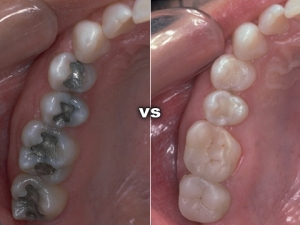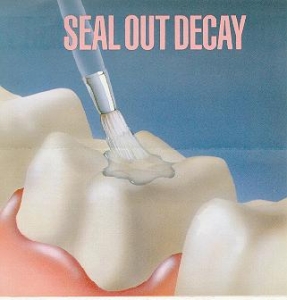Star of Texas Dental Assisting School is an Austin dental assisting school that combines classroom learning and hands-on training in a 12 week program. Students learn general and specialty assisting practices including restorative dentistry.
 With the advent of adhesive dentistry (bonding), the concept of how a tooth should be prepared for a filling has changed. In the old days, if you were to have a silver filling (silver amalgam filling material was invented in the early 1800s), the tooth would have to be drilled beyond what was necessary to remove the decay. The extra drilling is needed for undercuts to be placed to mechanically retain the silver material. The extra tooth that was removed would make the tooth weaker. With adhesive dentistry, the ability of the dentist to bond (attach) composite resin materials to the tooth has changed this concept. Now, all the dentist needs to do is remove decay and then bond the resin into position. This means less drilling, and the tooth remains stronger. The reduced need for drilling of a tooth allows the dentist to perform microdentistry procedures. The technical expertise needed on the part of the dentist increases while removal of the tooth structure decreases. Innovative ways of removing decay are constantly being developed. With use of magnifying loupes, dyes that can selectively stain decay, and the new bonding materials, more of the tooth is preserved.
With the advent of adhesive dentistry (bonding), the concept of how a tooth should be prepared for a filling has changed. In the old days, if you were to have a silver filling (silver amalgam filling material was invented in the early 1800s), the tooth would have to be drilled beyond what was necessary to remove the decay. The extra drilling is needed for undercuts to be placed to mechanically retain the silver material. The extra tooth that was removed would make the tooth weaker. With adhesive dentistry, the ability of the dentist to bond (attach) composite resin materials to the tooth has changed this concept. Now, all the dentist needs to do is remove decay and then bond the resin into position. This means less drilling, and the tooth remains stronger. The reduced need for drilling of a tooth allows the dentist to perform microdentistry procedures. The technical expertise needed on the part of the dentist increases while removal of the tooth structure decreases. Innovative ways of removing decay are constantly being developed. With use of magnifying loupes, dyes that can selectively stain decay, and the new bonding materials, more of the tooth is preserved.
A preventive resin restoration is a combination of a microdentistry  procedure and a conventional tooth sealant. In the old days, when a back tooth became decayed, the nondecayed grooves near the decayed portion were removed routinely to prevent further decay from starting. With a preventive resin, only the decay is removed. Bonding is placed to restore the area and a resin sealant is then bonded over the remainder of the tooth to prevent further decay. In this way, less drilling is needed and the tooth remains strong.
procedure and a conventional tooth sealant. In the old days, when a back tooth became decayed, the nondecayed grooves near the decayed portion were removed routinely to prevent further decay from starting. With a preventive resin, only the decay is removed. Bonding is placed to restore the area and a resin sealant is then bonded over the remainder of the tooth to prevent further decay. In this way, less drilling is needed and the tooth remains strong.
In preparing a tooth for a preventive resin, a traditional dental handpiece drill can be used to remove the decay, or the recently re-introduced air abrasion unit may be used. An air abrasion unit emits a stream of aluminum oxide or other smaller-particle sand-like material under high pressure. This is equivalent to sandblasting-but on a very small scale. The particles under high pressure quickly abrade away the decay, quietly and often with no need for a local anesthetic injection to numb the tooth. Another major advantage of abrasion dentistry is that the “sandblasting” does not cause cracks to form in the brittle tooth enamel. The traditional dental drill does cause cracks to radiate out from the preparation. These cracks have been implicated in an accelerated deterioration of the tooth and need for filling replacement. With abrasion dentistry this problem can be eliminated. Air abrasion cannot yet be used to prepare crowns and bridges or any type of cast and laboratory-fabricated restoration.
Please call Star of Texas Dental Assisting School if you have any questions about restorations or want to enroll in our Austin dental assisting program. (512) 487-1547

